Tiny Treasures: Eldred’s October 10, 2024 Netsuke Sale
Netsuke are tiny, carved toggles designed to secure an individual’s sagemono– or traditional purse– to their kimono’s obi (belt sash). These small-scale works of art have been part of Japanese culture since the 17th century. Regardless of age, materials, or form, netsuke by definition have two holes artfully integrated into their design to hold the cords joining these two accessories together. The earliest netsuke were purely functional and were made from found materials, including wood and roots. Starting in the Edo era (1615 – 1868), they became more sophisticated in design, themes, and materials. Over time, netsuke have been produced from animal products, including ivory, bone, tusk, horn, and shells; clay and porcelain; metals including gold, copper, and silver; and even semi-precious and precious stones. Traditional forms have included people, animals, plants, fruits, vegetables, gods and spirits, household items, and even erotica.
Eldred’s, of East Dennis, MA, is offering its 268-lot netsuke sale on October 10, 2024. The sale includes a spectrum of antique to modern examples across material and subject categories. Here are some eye-catching highlights of this netsuke sale.
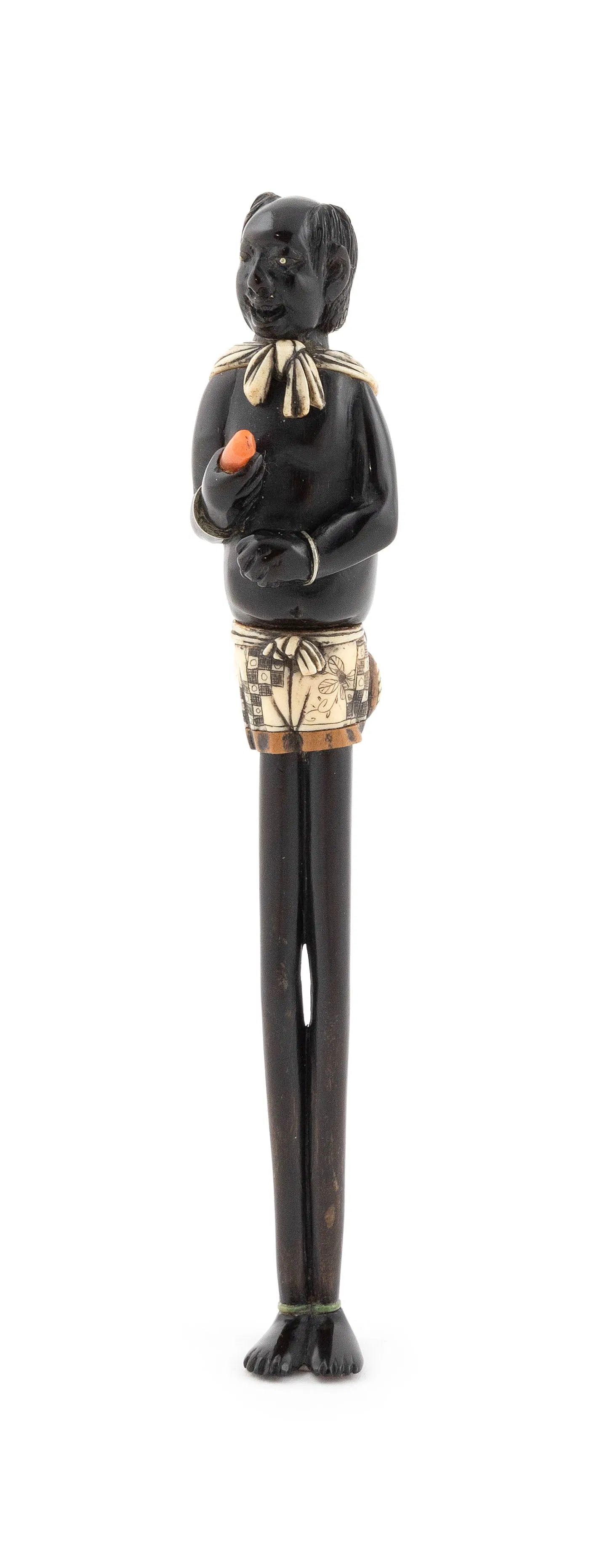
Carved Wood and Ivory Netsuke
The top lot in this netsuke sale is #0638, a carved wood and ivory netsuke attributed to Kyokusei. This unsigned example is estimated at USD 12,000 to $15,000. It is 6.75 inches tall and in the form of a tall, thin South Seas islander. He has well-rendered, oversized feet and toes which allow him to stand on his own. He comes to life with inlaid eyes, full hair above his shoulders, and a pleasant, open smile. His outfit consists of a well-carved ivory neckerchief and matching shorts, and his accessories include metal arm bracelets and green anklets. He holds a long, narrow piece of coral in his right hand.
The Japanese artist Kyokusei, who was active in the late 19th century, was especially known for his quirky, playful interpretation of native islanders. His work often included dark ebony wood and a variety of other natural materials– including ivory, coral, gemstones, and metal– to add authenticity and color contrast to his creations. In 2022, Galerie Zacke in Vienna, Austria sold a late 19th century inlaid ebony wood netsuke of a coral diver signed by Kyokusei for EUR 4,803.
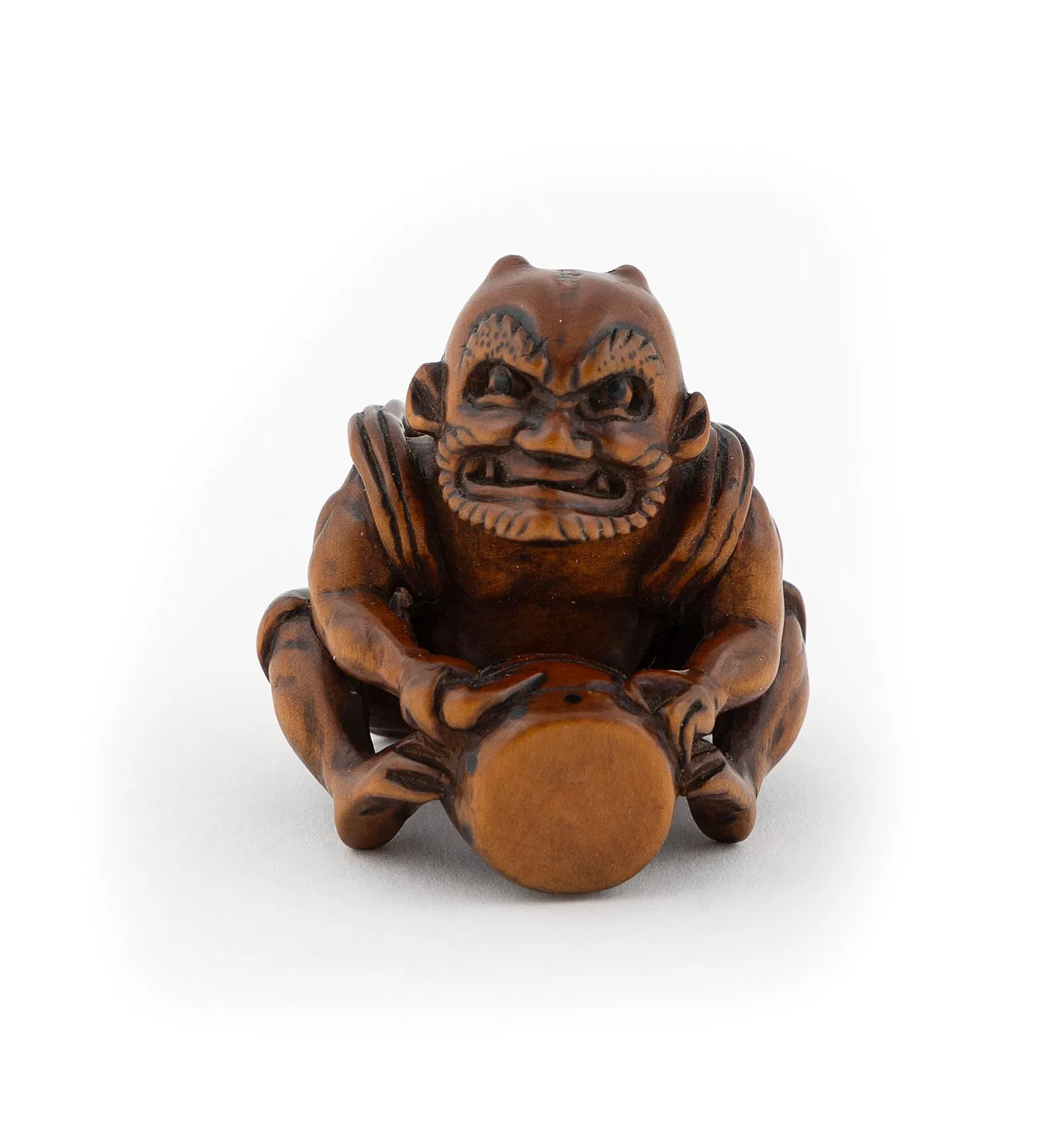
Carved Wood Netsuke by Ikkosai
This netsuke sale features strong selections of antique, signed wooden netsuke by legacy artists. Lot #0631, a Japanese Osaka School carved wood netsuke by Ikkosai, is estimated at $10,000 to $12,000. This rarity measures 1.75 inches tall and depicts Raijin, the god of thunder, sitting on the ground and playing his drum. It is magnificently designed and executed, with remarkable undercutting details throughout. The netsuke features darker inlaid eyes and as well as decorative studs along both sides of the instrument.
Japanese artist Ikkosai Toun (1804 – 1876) was active in the mid to late 19th century. He specialized in smaller scaled, finely crafted figures and animals. His Sambaso Dancer is featured in the permanent collection of The Walters Art Museum in Baltimore, MD. In 2023, Bonhams sold his small mother-of-pearl netsuke of a rabbit pounding mochi for nearly $4,000.
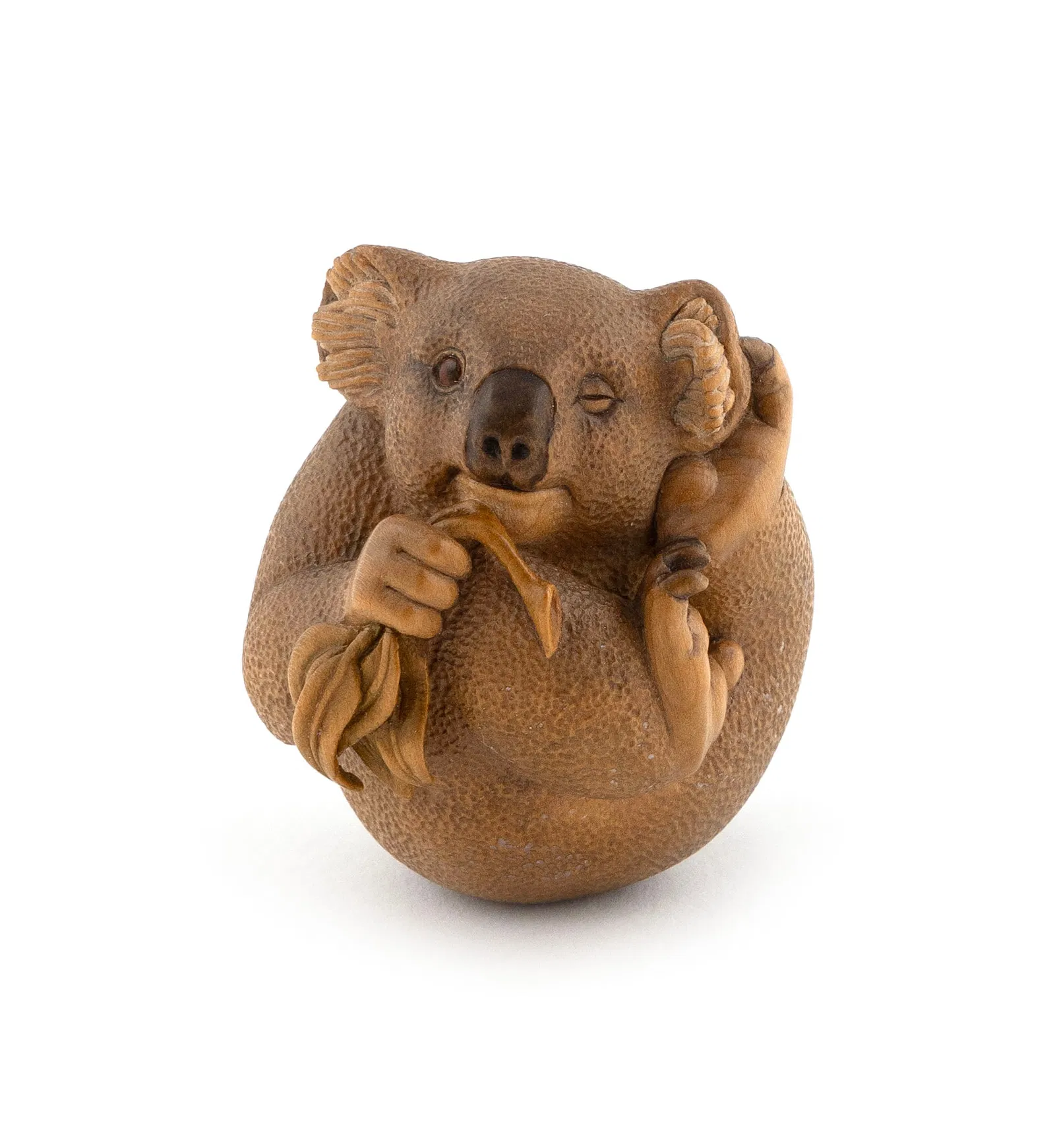
Carved Boxwood Netsuke by Susan Wraight
Also of note in this sale is a fine offering of modern netsuke reflecting unconventional themes or subjects. Lot #0727, a carved and stained boxwood netsuke by Australian artist Susan Wraight, is estimated at $2,000 to $4,000. This contemporary, nearly ball-shaped example is 1.5 inches tall and embodies a koala bear scratching an itch behind his ear with one of his feet. The marsupial holds a meal of eucalyptus leaves in one of his hands. One of his eyes is inlaid; the other is closed. The artist signed this netsuke on an 18-karat gold plaque located on the bottom of the piece.
Susan Wraight was formally trained at the Royal College of Art in London in jewelry making. She has been creating netsuke for more than four decades, primarily in wood. She is a leading member of the contemporary netsuke movement, which is pivoting netsuke from being primarily Japanese in theme and audience to a global art category with collectors and carvers on every continent. She was profiled as an important netsuke artist in the Fall, 2006 issue of the International Netsuke Journal and has given netsuke-making courses through the Victorian Woodworkers Association of Melbourne, Australia.
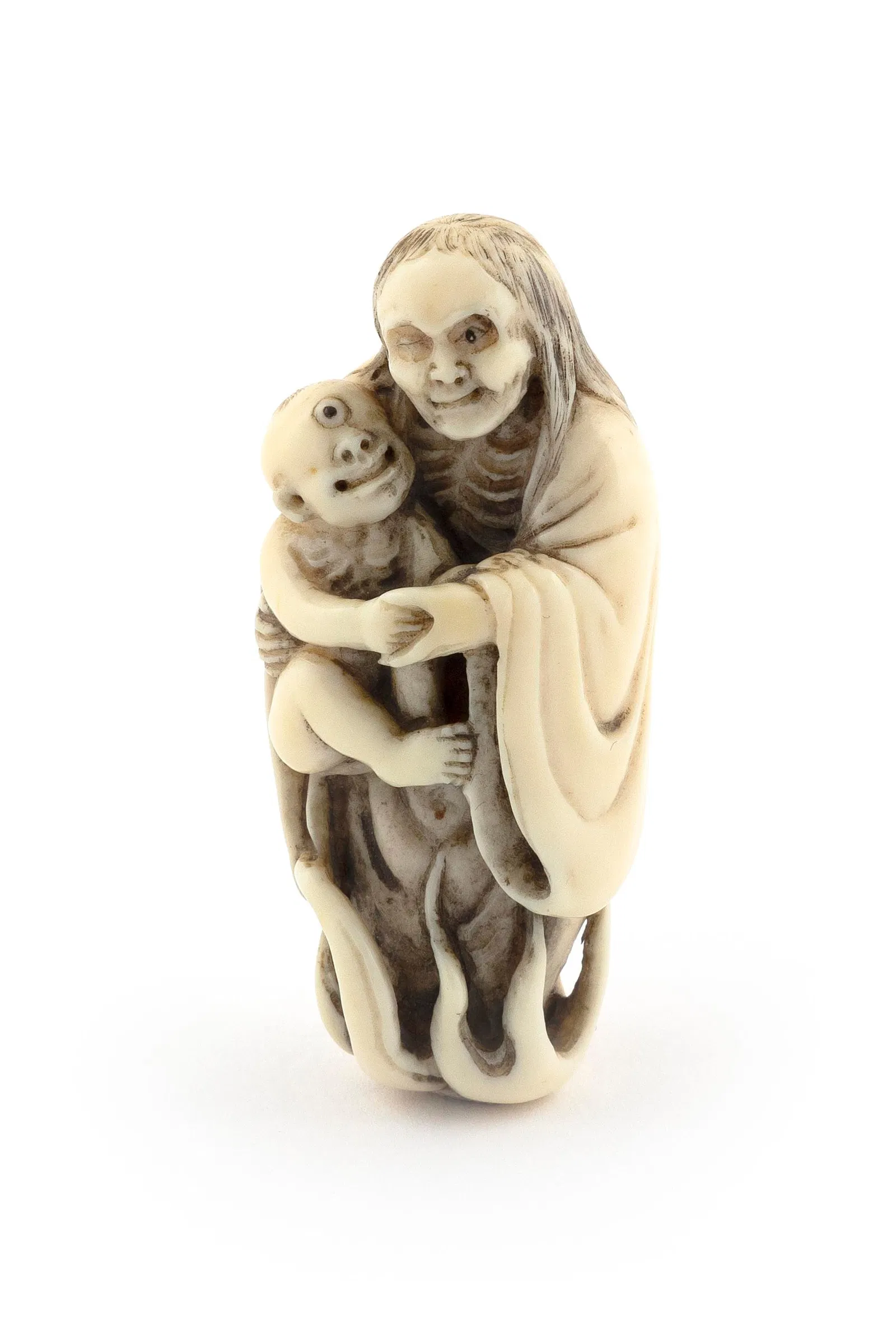
Ivory Netsuke by Masatoshi
Netsuke made from animal materials including ivory, tusk, and antlers is another premier category in this early autumn event. Lot #0677, an ivory netsuke by Masatoshi, is estimated at $6,000 to $7,000. This carving is 2.25 inches tall and includes two figures. One is an older, emaciated female ghost; she wears a flowing robe, has very long hair, and is emerging from flames. The other is a one-eyed infant with a large, dimensional nose and mouth. It is signed by the artist on its bottom.
Masatoshi (Japanese, b. Nakamura Tokisada,1915 – 2001) is considered the last of the traditional netsuke artists. His work is famous for outstanding sculptural integrity and fine attention to detail. In 1981, he partnered with Raymond Bushell to write the book The Art of Netsuke Carving by Masatoshi as told to Raymond Bushell. This reference tome is considered one of the finest of the netsuke category. In it, Masatoshi explained netsuke production in detail, including his approach to his work, his chosen themes and materials, his tools, and his processes, along with a history of the craft.
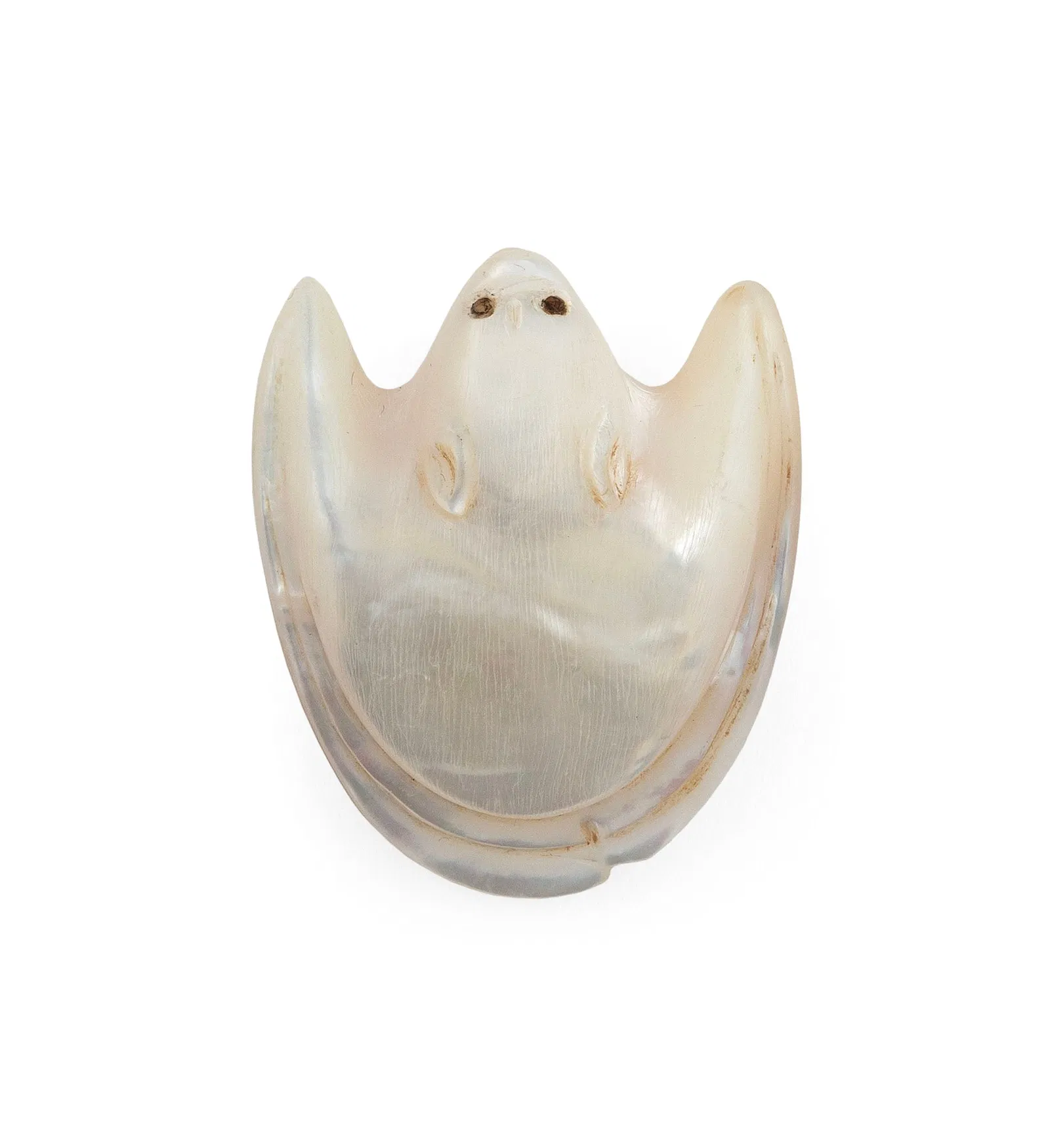
Modern Netsuke
Antique to modern-era netsuke and related accessories made from and/or decorated with ebony, mother of pearl, cloth, and other organic materials round out this important event. Lot #0623, a 19th-century Japanese mother-of-pearl netsuke carved as a bat, is estimated at $1,000 to $1,500. This unsigned example measures 1.5 inches long, is simply but elegantly carved, and features inlaid eyes.
For more information on Eldred’s Netsuke sale on October 10, 2024 and to register to bid, visit LiveAuctioneers. Find more auctions and news on Auction Daily.










